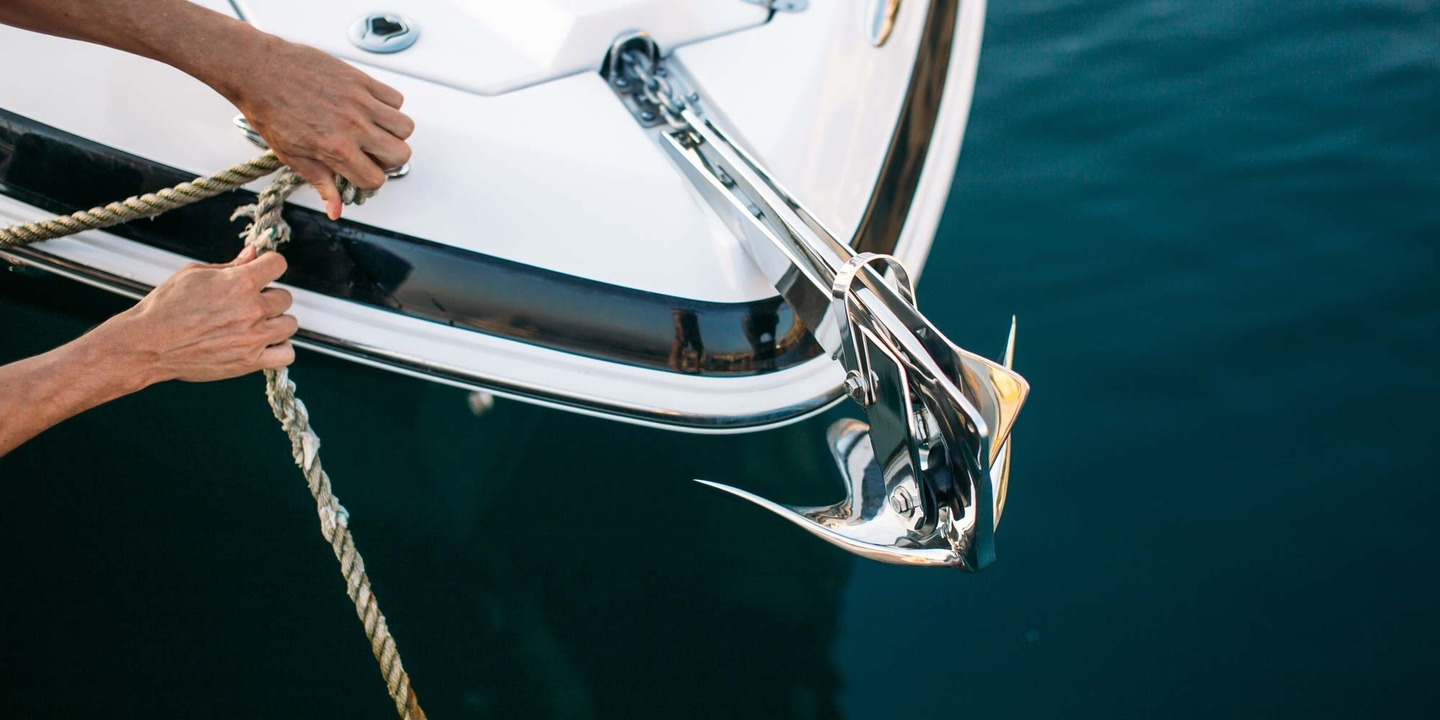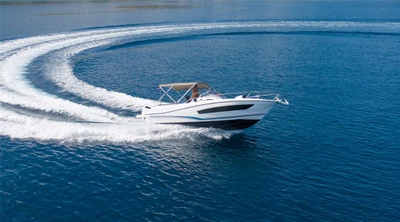How to anchor a boat
3 min read
One of my favorite things about boating is spending an entire day afloat. There’s something special about dropping an anchor in a beautiful cove and enjoying a carefree afternoon on the water. But the process can feel intimidating if you are not used to anchoring a boat. The good news is, no matter what type of boat you have, with clear instructions and a little practice, you can become an expert on how to properly anchor a boat in no time.
How do boat anchors work?
Anchors are designed to hold a boat in place by digging into the sea (or lake or river) floor. Once the anchor—which is attached to a chain or line on the boat—is properly set on the seabed, the boat won’t go floating off, but it may drift in a radius around the anchor point. While all boat anchors serve the same purpose, there are a handful of distinct types, each designed to accommodate a specific type of seafloor (sand, rock, mud, or grass). The most common types of anchors are danforth/fluke, scoop/spade, plow/delta, bruce and mushroom.
Steps for boat anchor set up
Before dropping an anchor anywhere, you should find a safe spot to anchor your boat, and be aware of local regulations and water depth. Find a safe spot to anchor your boat as you cannot anchor your boat just anywhere. Consider weather, wind, and tides, and make sure you’re not in a heavy traffic location. Many cities have boat etiquette rules that dictate where boats can and can’t drop anchor. Observe boat traffic in the area and see how many other boats are anchored nearby.
Knowing water depth is equally important to determine how much chain to let out and what your radius will be. When dropping an anchor, you’ll typically want to let out 5 feet of chain or rope for every foot of depth, plus the distance from your bow to the waterline (called the scope). So, if the lake is 20 feet deep and your scope is 6 feet, you’d let out 100 feet of chain (the 5:1 ratio) plus 6 feet (your scope).
Steps for anchoring a boat
Before you start anchoring a boat, you’ll ideally have at least two people on board (yourself and another person) when you anchor out. Having two people on board will allow you to keep the boat in position while the other person monitors the chain.
1. Position your boat with the bow facing into the wind
To begin anchoring your boat, position your boat with the bow facing into the wind. Once you’ve lowered the anchor and let out the appropriate amount of chain, the wind will help blow your boat away from the original drop site. The movement will cause the anchor to root into the seabed.
2. Unhook anchor locks
Unhook anchor locks and lower the anchor into the water, tracking the amount of chain you’re letting out (most chains will have markings every 5 to 10 feet).
3. Monitor the chain
Monitor the chain to ensure it remains pointing straight down. If it’s pulling in a different direction, reposition your boat.
4. Set the anchor
Once you’ve released your desired amount of scope, the anchor should set itself. You might drag a bit at first, usually for a minute or so. You may need to reverse gently to help the anchor set if there’s no wind.
If the anchor didn’t set after your first attempt, that’s okay. Sometimes it takes a couple of tries. Pull the anchor back up (see below for details) to just above the water line and repeat steps one through four.
5. Tie the anchor off
Once you’ve confirmed that you’re not dragging, tie the anchor off or use the locking mechanism on your windlass, engage your anchor monitoring system (see below), turn off your engines, and enjoy.
What is the best way to retrieve an anchor?
When you’re ready to head home, get everyone back on board. Scan your surroundings to ensure there aren’t any swimmers or small boats nearby, turn on your engines, and follow the steps below.
- Position your boat so the bow is lined up with the anchor chain, ensuring it’s vertical with the boat.
- Untie any knots and release any locks holding the anchor chain in place.
- Begin pulling up the chain while keeping the anchor line vertical so as not to add extra stress or tension.
- Monitor the markings on the anchor chain to track how much line you have left.
- Get the anchor settled into its cradle and lock the anchor back into place.
If you don’t have an electric windlass system onboard, or if the rope begins to release too quickly, just let it go. Never touch a rapidly descending rope. You can always pull it back on board and reset it. It’s not worth severely injuring your hands. Do you want to feel more prepared for emergencies when you’re on the water? Check out our boat safety equipment checklist.






